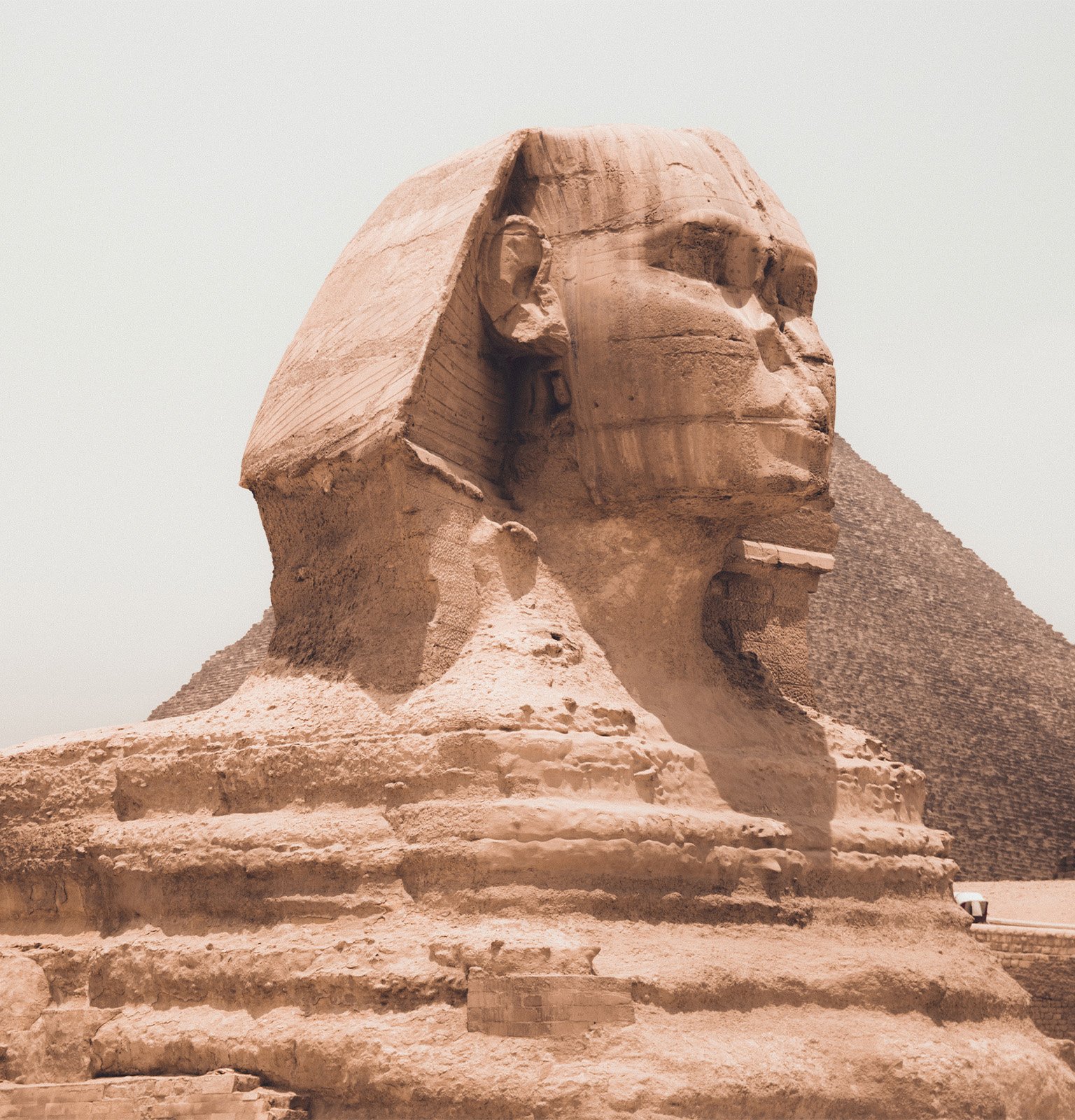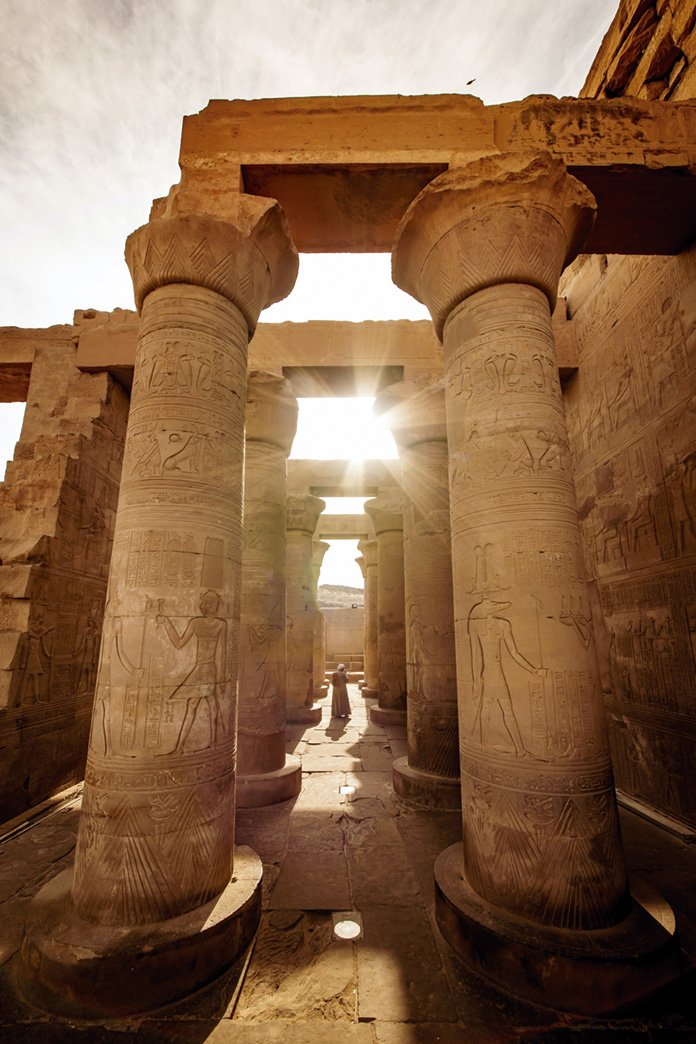
Dressed in
jellabiya and espadrilles, we embark on a journey into the past and present of
the country with the greatest archaeological legacy on the planet. Let the
adventure begin, in Egypt.
The route starts in the capital. There are metropolises and then there is Cairo. It’s morning and the hustle and bustle is overwhelming, making it hard to keep your eyes on the pavement. The sensuality of the streets, the exoticism of the people, the thriving traditions, the vibrant colours, the mysticism of the dervishes and the sphinx of the snake charmers leap into view like a cultural melody. In a few seconds of contemplation, you can see the commercial savvy and pollution that predominates in the street shopping areas. Between alleys and lanes, you arrive at the famous Khan el Khalili market, which once served as a trading centre in the Middle Ages, a place where merchants from all over the world gathered. As you walk through the space, you immediately notice the melting pot of cultures and the abundance of colours, aromas, sounds, flavours and products. Papyruses are displayed on the stalls, as are the busts of the pharaohs, artefacts exclusive to Egyptian lands. Vendors are vying to sell textiles, incense sticks, spices, gold and pieces of glass and metal, lavishing praise on anyone who dares to approach. Having had our fill of the sights, we headed towards the Egyptian Museum in Cairo. On our way, we noticed the profound Arab influence through the mosques which are multiplying - after all, Islam is the dominant religion. Arriving at Tahrir Square, we enter Egypt’s largest repository of relics, which takes time, as it covers 30 pharaonic dynasties in 120,000 collected pieces. It is in this museum that you grasp the complexity of a sophisticated culture, enriched by the best artists and architects who saw the funereal journey to the afterlife as a perpetuation of life in all its dimensions. Among sarcophagi, statues, mummies, burial masks and curious objects, the visit ends just in time to savour the sunset, which looks like a red-hot fire drowning among Cairo’s skyscrapers. In a short space of time, the echo of Islamic prayers can be heard throughout the city and, in the blink of an eye, it’s night and the landscape becomes a blanket of light and music.
The greatest archaeological legacy on the planet
The route starts in the capital. There are metropolises and then there is Cairo. It’s morning and the hustle and bustle is overwhelming, making it hard to keep your eyes on the pavement. The sensuality of the streets, the exoticism of the people, the thriving traditions, the vibrant colours, the mysticism of the dervishes and the sphinx of the snake charmers leap into view like a cultural melody. In a few seconds of contemplation, you can see the commercial savvy and pollution that predominates in the street shopping areas. Between alleys and lanes, you arrive at the famous Khan el Khalili market, which once served as a trading centre in the Middle Ages, a place where merchants from all over the world gathered. As you walk through the space, you immediately notice the melting pot of cultures and the abundance of colours, aromas, sounds, flavours and products. Papyruses are displayed on the stalls, as are the busts of the pharaohs, artefacts exclusive to Egyptian lands. Vendors are vying to sell textiles, incense sticks, spices, gold and pieces of glass and metal, lavishing praise on anyone who dares to approach. Having had our fill of the sights, we headed towards the Egyptian Museum in Cairo. On our way, we noticed the profound Arab influence through the mosques which are multiplying - after all, Islam is the dominant religion. Arriving at Tahrir Square, we enter Egypt’s largest repository of relics, which takes time, as it covers 30 pharaonic dynasties in 120,000 collected pieces. It is in this museum that you grasp the complexity of a sophisticated culture, enriched by the best artists and architects who saw the funereal journey to the afterlife as a perpetuation of life in all its dimensions. Among sarcophagi, statues, mummies, burial masks and curious objects, the visit ends just in time to savour the sunset, which looks like a red-hot fire drowning among Cairo’s skyscrapers. In a short space of time, the echo of Islamic prayers can be heard throughout the city and, in the blink of an eye, it’s night and the landscape becomes a blanket of light and music.
The greatest archaeological legacy on the planet











